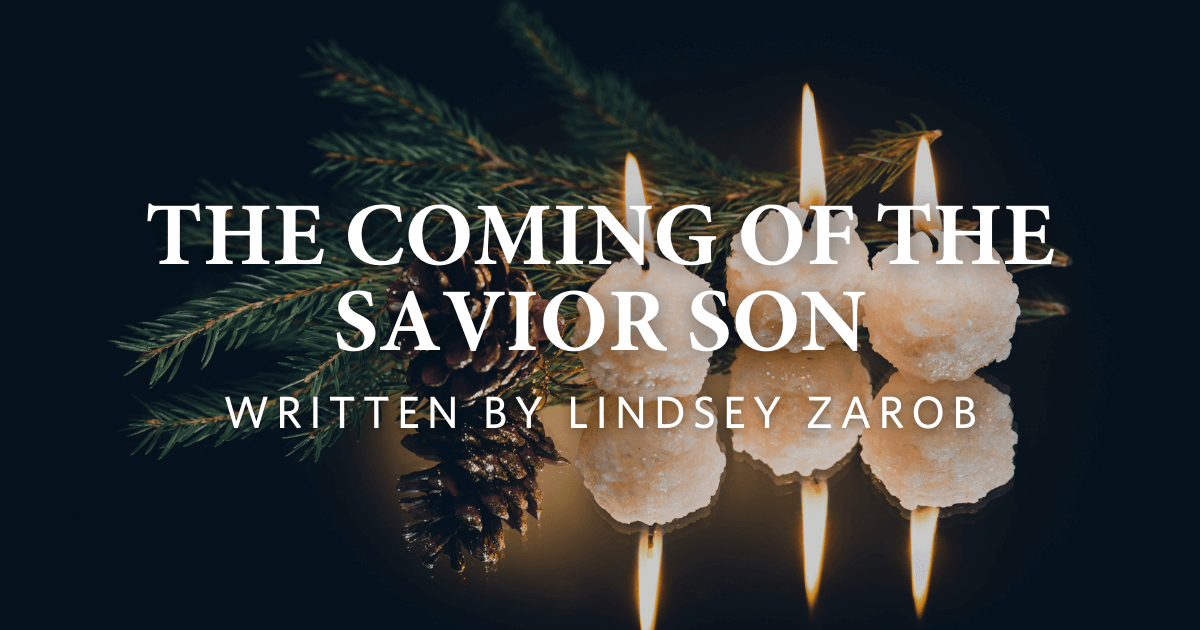In the northern hemisphere, where we live, it is the darkest time of year. The sun rises later and later each day and sets later and later as well.
If this loss of daylight did not fall during the holiday season, I know I would find it a lot harder than I already do. I truly feel for those that suffer from seasonal affective disorder. A lack of light and the early onset of darkness each day makes it easy to want to stay indoors by a fire doing little else.
Come December 22 though, the day after the darkest day of the year, this begins to shift. The sun, ever so gradually, begins to rise earlier and set later—one minute at a time. We can count on this change.
They say the darkest hour of the day is just before dawn. It is a figure of speech and not a fact, but in this Advent season, as we wait for the dark of night to retreat and anticipate the coming of the Savior Son, something about the phrase feels true.
The Darkness Before the Dawn
Between the close of the Old Testament and the start of the New Testament, there were 400 years of silence. This period is often called the “silent years” because God didn’t speak through any prophets during this time. In these 400 years, the chosen people consistently faced some form of persecution and oppression. Eventually the ruthless, cutthroat, completely unjust Romans took over—beginning their rule in Jerusalem by slaughtering the priests in the walls of the temple. It was a brutal and clear message that the identity of God’s chosen people was not going to be tolerated. Utter cruelty.
This is where Advent begins, by encouraging us to remember the years of silence. We engage our imagination to consider what it would have been like for the Jewish people to wait for so long. Thousands of years of prophets speaking on behalf of God and then nothing for so very long. All the while experiencing the oppression and persecution that many of us will never know. It must have been dark. It must have felt hopeless. It must have seemed like God had left them and outright abandoned them. How long would they have to wait? Were the prophets of old wrong? How long was this desert period going to last? Was there anything they could do to change it? Where was their Messiah?
If we’re honest, this is where some of us might find ourselves this season. In a place where we feel abandoned, alone, or lost. Maybe you have experienced loss and are grieving. Maybe the holidays aren’t filled with loving family for you—in fact it’s the exact opposite. Maybe you’re watching the world and wondering, where are you God? This virus keeps going. Our country seems at odds with itself over everything. Relationships have never felt so difficult.
There is real heartbreak. Real loss. Real angst.
How long will this season last?
These heart wrenching things remind our hearts that there is more to come. The brokenness creates a longing for wholeness. And that wholeness comes from Jesus alone.
After 400 years of silence; 400 years of wondering if God had forgotten them—He didn’t answer the cry of His people through a prophet or a burning bush. No, God broke the silence with a baby’s cry and answered the cry of His people with Himself. With His presence.
And this is the invitation of Advent, to sit in His presence. When the answers cannot be attained, He says my presence is the answer. When the heartache feels unrelenting, the relationships too hard, the pandemic never ending, the loneliness unbearable, He brings His presence.
“The virgin will conceive and give birth to a son, and they will call him Immanuel” (which means “God with us”). – Mathew 1:23
Answers and resolution may not be found—but He is. The Messiah has come. Immanuel, God is with us.
The Time Between
And so we, as Fleming Rutledge calls it, live in the Time Between. The Already and the Not Yet. He has come AND He will come again to restore and renew all things. This is the full story of Advent.
“‘He will wipe every tear from their eyes. There will be no more death’ or mourning or crying or pain, for the old order of things has passed away.”
He who was seated on the throne said, ‘I am making everything new!’” – Revelation 21:4-5
We journey toward Christmas in the light of His second coming.
We are invited to imagine with God what it was like before that first Christmas and what it will be like when He comes again. To imagine and to join in with Him as He reigns here, in the Already and Not Yet, in and through us.
So, while we recognize the uncertainties of the present time, we can still bake a cake for baby Jesus like some families do, with the utmost of joy.
We can stare loneliness in the eyes and show our neighbor the love of God that is unwavering and triumphant.
We can look at the long, difficult road to healing and know that the Great Physician will one day make our bodies perfect.
Advent gives us space to press into this tension.
In her book Shadow and Light, Tsh Oxenreider says: “Advent is about remembering that Christ already came to save the world while recognizing that the work of redemption will not be finished until he comes again. Advent is also a realization of our daily, ongoing preparation—the work of inviting the Holy Spirit into our lives and making room for Christ to do a good work in us.”
There are only a few more days left in this precious and holy season, but it is not too late to ponder, recognize, and celebrate. Whether you light candles, use an Advent devotional, or simply commit to intentional time with God, opening our hearts and minds to the sacred imaginary of Advent can be an utterly profound experience.





